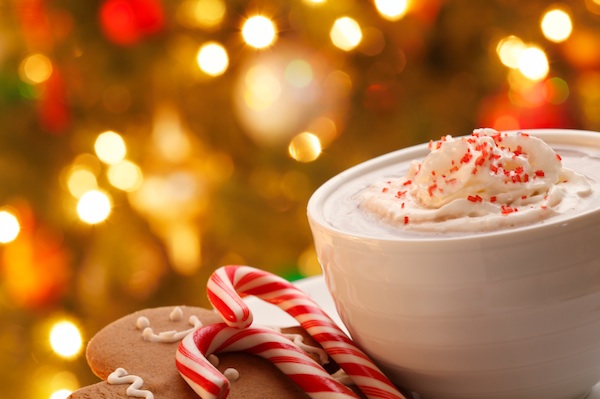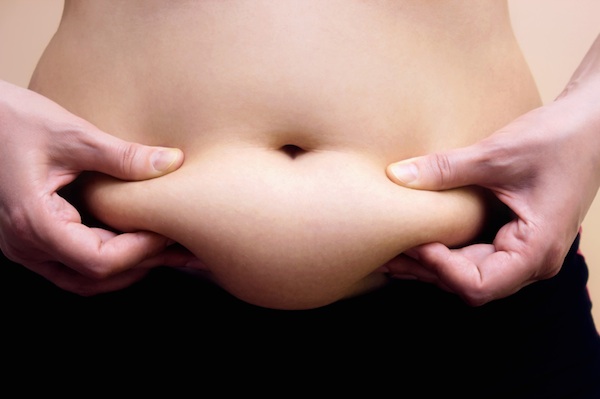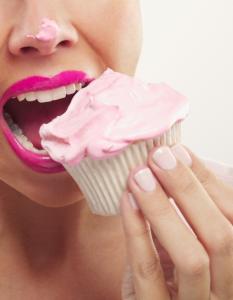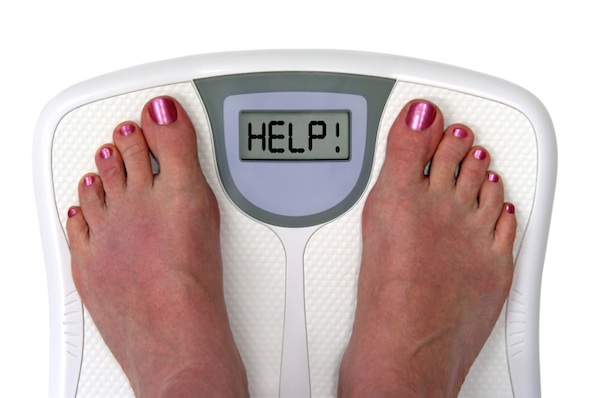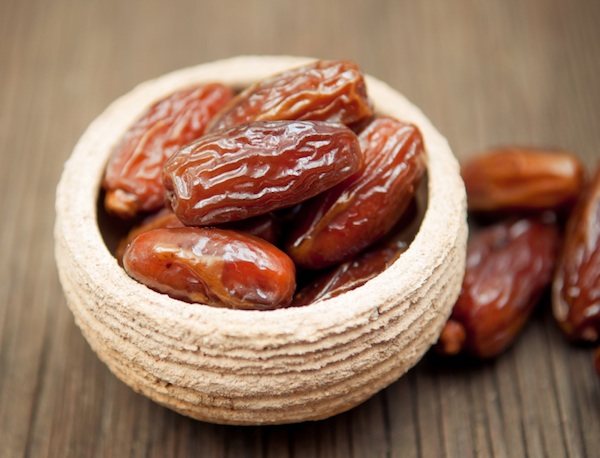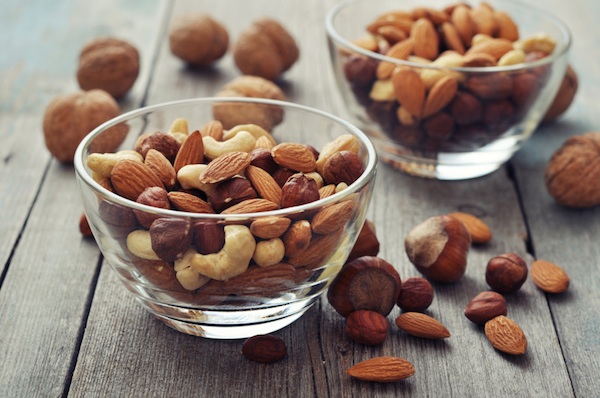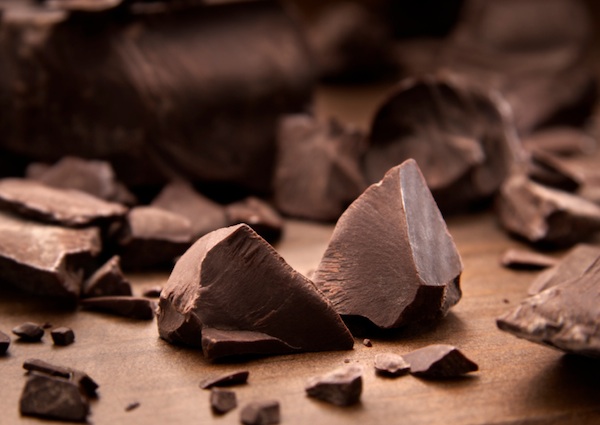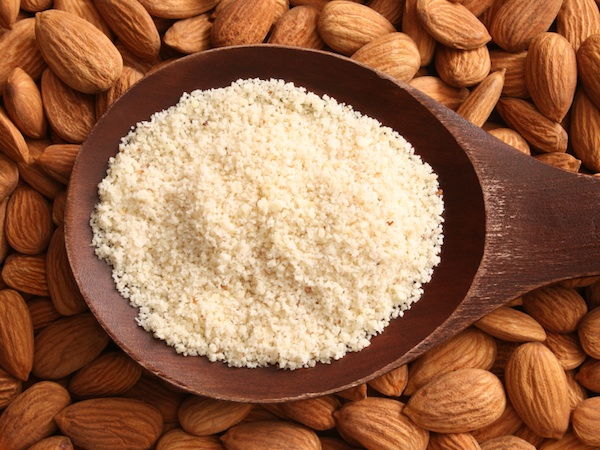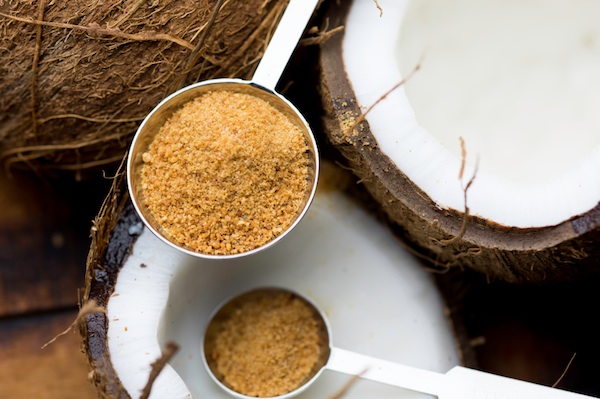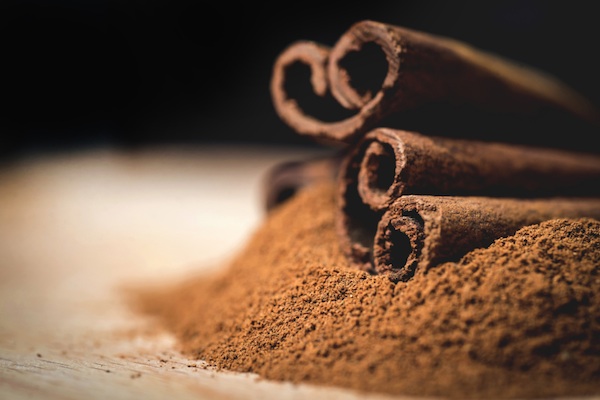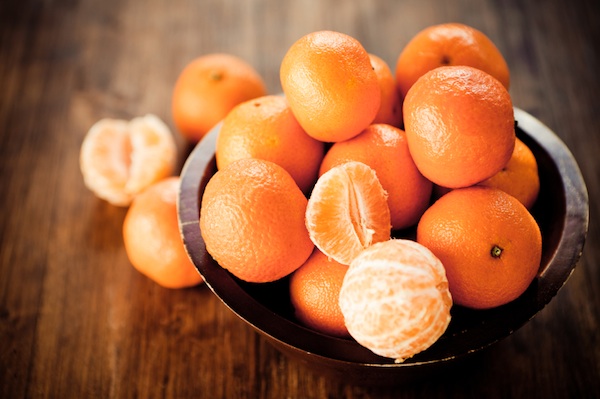It’s that time of year again – sugar laden treats are all around us and there’s a huge temptation to fall into a sugar coma. Charlotte Watts tells us how to have a low sugar Christmas
It’s here, the season where the brightly coloured wrappers and decorated boxes adorn chocolates, biscuits and sweets in the name of Christmas. For some this represents dietary abandon with the resolution to bring it all round in the New Year. But some of us have had enough of that swing and prefer not to feel like we’re lurching from a sugared-up state that leaves us feeling sluggish, bloated and well, a bit dirty to somehow suddenly having the willpower to give it all up come Hogmanay.
Understanding what’s going on in our bodies and brain is really helpful to make informed decisions. Add that into some intelligent and enjoyable Christmas choices and we have the option to greet January feeling as we mean to go on. That doesn’t mean we’re not fun, let’s not confuse Christmas cheer with sugar intake; respecting our own health is not about piety and denial, but moving towards nourishing choices and choosing not to let treats become habits because we really love feeling as best we can. A sugar rush is not the same as long-term contentment…
The real sugar low-down
Before you read on, I warn you I’m going to be a bit down on sugar before I get to the helpful stuff in the Christmas spirit. In order to find ways to navigate the sugar tsunami coming at us over this period and find a graceful way to enjoy treats without creating sugar issues (to create a legacy for the New Year), it’s important to understand the nature of what we are discussing. Don’t worry, I won’t be saying you necessarily need to completely avoid all the Christmas goodies, but there are some smart and enjoyable ways to enjoy some indulgence mindfully over the festive season.
With sugar consumption on a startling increase all year round, Christmas creates a culture of permission. I’ve had phrases like ‘go on, it’s Christmas’ and ‘let your hair down’ as I’ve said a polite no thanks to a Christmas-themed biscuit, cake or sweet already this season. I really didn’t want them and had to insist several times, not in an I’m a nutritionist type of way, just more no, I don’t actually want it. Like being encouraged to drink alcohol, it seems that sugar consumption is associated with group bonding and fun.
Like being encouraged to drink alcohol, it seems that sugar consumption is associated with group bonding and fun.
The Scientific Advisory Committee on Nutrition (SACN) recently recommended that sugar should make up no more than 5% of daily calorie intake, which equates to 30g or 7 cubes of sugar per day. That is sugar excess of that found naturally in complex, natural sources like fruit, so will include more processed versions hiding sugar as ‘healthy’, like fruit syrups and concentrated juices, for example, many health foods are sweetened with the fast sugar release grape juice. For many people, eating 7 sugar cubes a day sounds unpalatable, but it’s pretty common in the guise of fruit juices, syrups (yes, agave does count) and in the more obvious cakes and biscuits, but also hidden in ready meals and savoury foods like ketchup and baked beans. Currently, the main sources of the nation’s sugar intake include sugar-sweetened drinks (carbonated drinks, juice drinks, energy drinks, squashes and cordials); cereal-based products (biscuits, cakes, pastries and sweetened breakfast cereals); table sugar and confectionery; and fruit juice.
All things festive have that air of being acceptable as in-the-spirit and cheery, masking the truth of the massive sugar content. One example from a recent report in the Daily Mail revealed that Christmas coffees can contain up to 100g of sugar. If something contains more than 10g sugar (under carbohydrates on the label) per 100g, that’s a lot. Fruit naturally contains more, but has the whole complex, fibrous, nutritional package designed to help our bodies cope with the surge of this potentially damaging energy source.
Christmas coffees can contain up to 100g of sugar
Taking in more than we need for energy output, can cause weight gain (excess is laid down as fat, mostly around the middle), lowered beneficial gut bacteria and inflammation, all contributing factors to chronic diseases like osteoporosis, heart disease, arthritis, auto-immune conditions; to name a few. The NHS Diabetes Prevention Programme is due to start phased national roll out next year. The programme will identify people who are at risk of developing type 2 diabetes, and will help those people adjust their lifestyles to reduce their risk. They have identified that:
- Sugar is a contributor to excess calories in the diet which leads to weight gain and obesity.
- 90% of people with type 2 diabetes are either overweight or obese
- 5 million people are currently at risk of developing type 2 diabetes
It’s a much harder job to ensure prevention is a way of life, rather than a between season (yup, Easter comes next…) attempt. The more we automatically reach for sugar, the more acceptable this habit becomes and the harder to walk away from.
The more we automatically reach for sugar, the more acceptable this habit becomes and the harder to walk away from.
The Christmas sugar marketing onslaught
Christmas has always brought up mixed emotions for me. When I was younger I had quite a seriously disordered and overwhelming relationship with sugar. Low mood and energy meant I craved and when seeking it continually, feeling like I was completely in its power and suffering intense crankiness, intolerance and inability to cope without it.
Addressing this addiction and blood sugar imbalance has been a large part of my own journey to health and that which I help others with. It’s the foundation to nutrition that every nutritionist begins with. Supporting any other aspects of health without helping to even out the rollercoaster highs and lows of wildly fluctuating blood glucose levels can never really be truly effective as a consistent supply of energy to whole body – including the brain – is a fundamental basic.
Like any addictive substance, sugar creates release of the rewarding neurotransmitter dopamine. This set up the neural pathways in our brains to associate a situation where we have the addicting substance with a sense of relief, soothing and satisfaction.
If you took issue with the word ‘addiction’ in the paragraph above I refer you to the work of the late Bart Hoebel. He was the scientist who with his team, spent 15 years offering rats the choice of sugar water or cocaine. Time and time again the rats chose the reliably delivering hits of the sugar. Like any addictive substance, sugar creates release of the rewarding neurotransmitter dopamine. This set up the neural pathways in our brains to associate a situation where we have the addicting substance with a sense of relief, soothing and satisfaction. So for instance, if we turn to sugar when we are upset, our brains will drive us to seek it out and self-medicate with it to dampen these intense feelings. The same goes if we use sugar to reward ourselves or associated with certain situations. Hoebel identified that sugar satisfied four out of the five criteria for an addictive substance: bingeing, cravings, withdrawal and relapse.
Hoebel identified that sugar satisfied four out of the five criteria for an addictive substance: bingeing, cravings, withdrawal and relapse.
The conditioning of Christmas past
So add the intense sensations and memories of Christmas to the prevalence of a substance that can profoundly alter our neurochemistry and we have a recipe for craving and mental conflict, especially when we want to make healthier choices in life.
From our earliest childhood memories, Christmas has been associated with sugary treats for the majority of us. Whether we were allowed to over-indulge or denied the full binge we wanted, there are deep seated historical, neurological grooves in place. It can just take a whisper of the sights and sounds of Christmas, alongside the presence of all that charismatic packaging and our mince pie and reindeer-shaped chocolate and cravings can come out in force, as if we were that small child again.
It’s been a good 20 years since I set off on a path to help find my optimal health through considered nutrition. In that time, the Christmas period has always been a bit of a blip in my flow. I used to just give in and ride the wave of permission for my issues, but years of that leaving me feeling self-critical and quite frankly, unwell into the difficult winter months guided me to find a new approach. These days I enjoy some of the stuff I really like – Christmas pudding and brandy butter, the occasional mince pie and seriously good quality chocolates – but just to the extent that I still feel the path back remains clear and in reach. I’m now 45 and this middle path means enjoyment with the sense that I’m in control, not the sugar.
How to change
New relationships with sugar and Christmas can take a few seasons to change. If you’re in the grips of sugar issues now, note what your habits are and although this Christmas may not be the time to reduce drastically, at least try not to up the quantity that you consume. That way, after you can begin to reduce without having made it a steeper climb down. The suggestions below are helpful for any time of year – to provide both social and psychological strategies and alternative soothers for the sweet craving monsters that help balance blood sugar and alleviate the root cause. You can read more at my others blogs:
It is known that if we can see something or it is within around 1.2m of reach, then we are more likely to desire it and even unconsciously or mindlessly put it in our mouths. This is the opposite of conscious choice where our actions are congruent with our more long term (rather than knee-jerk, instant gratification) wishes and intentions for our health choices. It also makes us feel out of control and can start cycles of guilt and blame that create the emotional discomfort that sends us back to wanting to self-soothe with sugar.
4 strategies to not have to make sugar decisions
With Christmas sugar clearly in view and often entering our peripheral environment uninvited, much conflict can be set up for those of us who prefer how we feel without sugar swimming around our bodies and brains. Some clearly set boundaries and personal guidelines can find clarity and control amongst the temptation:
- Choose what you really, really like as a treat and only have that in the house – if you’re like me and chocolate in the cupboard creates a constant inner dialogue and it’s only a matter of time (I’ll even just wolf it down just to get it gone), then just saving treats for out and about may be best for you.
- Ask others not to buy you chocolates – most people who buy me presents know me well enough to only buy me excellent treats, like Booja Booja Champagne Truffles or a bar of Montezuma or Divine chocolate, but the odd sweeter, commercial stuff occasionally gets through and believe me, I want to eat it and probably will… Of course this isn’t so bad every now and then, but I prefer to choose my treats wisely and really enjoy them to the full, with no guilt or conflict.
- Explore whether a smaller portion of abstinence works better for you – people are different; some lucky folks can keep a packet of biscuits in the cupboard and barely touch them and others of us are distinctly all or nothing. Know your habits and also help out those you live with. If you’re the former and your partner the latter, he/she may struggle with you having stuff in the house. A previous boyfriend used to ‘hold’ the dark chocolate and as the keeper, would only let us eat it together in the evening. That may sound extreme, but I guzzle enough for two when I worked at home and he was out to work.
- Remember sweet tooths are created and can be undone – we can change our palate and when we have less sugar, things can start to taste too sweet. This is how people’s taste change to appreciate the bitter tones of dark chocolate and go off the sickly sweet of cheaper confectionary. It doesn’t take long and the more you choose the savoury over the sweet, the quicker your brain gets used to receiving and appreciating the sour, the bitter and the strongly savoury (umami).
The Christmas sugar culture
Sugar, like alcohol, can be a great fuel for peer pressure. With the current culture of office bonding over cake creating difficult temptation for many, the extra burden of brightly packaged celebratory sugar can be rather stressful. I see many clients for whom a common obstacle to finding the treat versus habit balance comes via encouragement to ‘join in or you’re no fun’ or having to constantly resist a tuck-shop or even freebies provided by the company. And that’s on a normal week, so the culture that we’re not in the Christmas spirit if we don’t eat the goodies can mean we have to expend much mental energy on either putting up the defences or the fallout of giving in.
Apparently we have over 6000 thoughts a day, within that making over 200 decisions about what to eat.
Apparently we have over 6000 thoughts a day, within that making over 200 decisions about what to eat. Our wild ancestors were lucky to come across food, let alone have any choice over what was available. Their brains were simply set for seeking to motivate to find food and we are living from this ingrained neurochemistry. We see it and we want it, especially the rewarding brain rush of the happy neurochemical dopamine that surges in response to sugar. With 90% of our food decisions believed to be unconscious, we can sometimes wonder what happened when we find ourselves eating the chocolate from the bowl.
With 90% of our food decisions believed to be unconscious, we can sometimes wonder what happened when we find ourselves eating the chocolate from the bowl.
Cultures are created and it is well documented that obesity is ‘catching’ in the sense that if everyone around us eats lots of unhealthy food and is overweight, it is a more acceptable norm for us to follow. Some of my clients who start taking more healthy food into the office can get raised eyebrows, but can also start new cultural norms where others join in.
Some of my clients who start taking more healthy food into the office can get raised eyebrows, but can also start new cultural norms where others join in.
With food consciousness and recipe book buying on the rise, there is an opportunity to turn this round to exploring some old-skool Christmas traditions that worked well for the point of this time of year. The yuletide period was a feast time to nourish the strength and immune resilience to get folks through the deepest Christmas months. Heaps of refined sugars do the opposite, sugar dampens white blood cell production and destroys beneficial gut bacteria (probiotics) that are both crucial for fighting off illness and dealing with invaders that do get through. Sugar metabolism steals vital B vitamins and magnesium needed for energy production, including thermogenesis, the heat creation that works much harder in winter and burns off stored fat.
Foods that balance blood sugar also help us get through the winter as they encourage regulated serotonin levels. This is the neurotransmitter that is lowered in those who suffer SAD (Seasonal Affective Disorder) as it maintains mood, motivation and the imperative to socialise with our tribes. When serotonin is low, we have a survival impulse that involves sugar craving as that raises the hormone insulin, needed to shunt the protein building-block tryptophan into the brain. Eating quality protein sources (meat, fish, eggs, dairy, nuts, seeds) supplies this and also balances blood sugar to make it easier to resist quick-fix sugar highs. This is traditionally the time of warming stews, game, root veg, dark green leaves and berries in colder Northern European climates.
Fancy a sweet treat? 7 smart choices
Add in some clever and delicious treats and health and enjoyment can come together as they sit best. Keeping these on the sideboard near any Quality Street that creep in there over the days of Christmas can help that reaching hand come back with something your body will appreciate. Even if you eat more of these than you may usually over the festive period, that’s good damage limitation if it reducing harmful sugar intake.
Add in some clever and delicious treats and health and enjoyment can come together as they sit best.
Dates
A Christmas tradition from the East and evocative of the Three Wise Men, dates are known to be high in serotonin-producing tryptophan. They used to be criticised for being extremely high GI (Glycaemic Index) and fast sugar release, but the original researchers of this measure did a turn-around and they have been given a reprise as a low GI (42) food as they contain such a wonderful amount of soluble fibre that slows down sugar release. This makes them extremely satisfying as a sweet treat and if you’ve tasted one recently, you’ll know that they pack a real punch – you don’t need that many. This fibre also helps to keep our colon naturally clean and able to fully eliminate toxins. A 2014 study in the Journal of Nutrition Science reported that ‘date fruits may enhance colon health by increasing beneficial bacterial growth and inhibiting the proliferation of colon cancer cells’. Quite the opposite to refined sugar sources, which can damage this environment.
they have been given a reprise as a low GI (42) food as they contain such a wonderful amount of soluble fibre that slows down sugar release.
Dates contain 15 important minerals, including iron, which we need for healthy red blood cells and oxygenation, potassium for blood pressure regulation and fluid balance and selenium for immune function and cancer protection. Others we need for optimal health include boron, calcium, cobalt, copper, fluorine, iron, magnesium, manganese, phosphorous, sodium and zinc. They show levels of 23 types of amino acids (protein building blocks), some of which are not present in popular fruits like oranges, apples and bananas.
dates ‘may be considered as an almost ideal food, providing a wide range of essential nutrients and potential health benefits.’
A 2003 study in the International Journal of Nutrition and Food Sciences stated that dates ‘may be considered as an almost ideal food, providing a wide range of essential nutrients and potential health benefits.’ This includes at least six vitamins including a small amount of vitamin C, and vitamins B(1) thiamine, B(2) riboflavin, nicotinic acid (niacin) and vitamin A.
Nuts
Nuts – and especially almonds – are rich in mood-supporting tryptophan. Almonds are a terrific source of vegetarian protein and fibre, helping to regulate blood sugar and hunger levels, making them a perfect snack for energy, mood, concentration and natural weight control. Almonds contain a good dose of the omega 6 oils that can stabilise mood changes associated with PMS, good to know if (you’re female) and this kindly coincides with Christmas. They also contain high levels of the monounsaturated and oleic oils so representative of the Mediterranean diet and also found in olive oil, walnuts and avocados; extensive studies have shown that eating almonds regularly lowers ‘bad’ cholesterol levels and also reduces the risk of heart disease, gallstones and diabetes. They are also rich in copper, manganese, vitamin B2 and vitamin E.
Almonds are a terrific source of vegetarian protein and fibre, helping to regulate blood sugar and hunger levels, making them a perfect snack for energy, mood, concentration and natural weight control.
Almonds are particularly effective at balancing blood sugar, which means that they will help you to resist those cravings for chocolate and sweets. The nutrients in them will also help to produce energy and break the cycle of “highs and lows” and still leave you feeling satisfied. Any nut will provide the satisfaction of protein and healthy fats; try pecans, cashews, Brazils and walnuts (even stuffing them into dates, delicious!) – walnuts also contain the anti-depressant substance uridine, great for the SAD months ahead.
eating almonds regularly lowers ‘bad’ cholesterol levels and also reduces the risk of heart disease, gallstones and diabetes.
Cracking nuts is a fantastic Christmas tradition, which makes us work a bit for our food, something us modern human bodies sorely miss. You can also have a nut mix with a little dried fruit for the sweet cravings and even cocoa nibs for the chocolate hit.
Dark chocolate over milk
Another great tryptophan source, dark chocolate is a much better health choice than milk. A 40g/1.5oz bar of milk chocolate will contain not only dairy, but also as much as 7 teaspoons of sugar compared to a three-teaspoon average for the same weight of 70 per cent cocoa dark chocolate. It is rich in the anti-inflammatory and heart-protective polyphenol antioxidants also found in wine or green tea and 40g a day have shown to help us cope with stress. It’s good to allow this treat and contain sugar cravings with this permission to help resist other, less healthy sources in your sight range.
A 40g/1.5oz bar of milk chocolate will contain not only dairy, but also as much as 7 teaspoons of sugar compared to a three-teaspoon average for the same weight of 70 per cent cocoa dark chocolate.
Adding nuts to chocolate is a perfect marriage, creating my favourite – Dark Chocolate Brazil Nuts. Cocoa Loco or Biona do great ones or you can easily make your own; melt good quality dark chocolate (even flavoured with orange oil or spices) in a Bain Marie, add in enough nuts to be able to cover them all thinly as you mix around and then lay out this mixture to cool on a sheet of baking paper. Then you can break bits off to store or eat and you can add anything else you like; spices, vanilla extract, unsweetened coconut or chopped dates.
Almond flour
If you’re baking your own Christmas goodies as treats or presents, a few changes can help move them into the healthier zone. Ground almonds are also referred to as almond flour as they are a fantastic alternative to flour that can be used to replace wheat and other grains in cooking. This has the effect of lowering gluten intake and increasing the healthy oil and protein amounts. It can also be mixed in with coconut flour.
Coconut and coconut sugar
Christmas baking is obviously going to need some sweetening and my favourite at the moment is coconut sugar aka coconut nectar. It’s still sugar, but lower GI, retaining some minerals and so not a ‘healthy alternative’, but I have found that its taste is quite caramel-like and intense, so you really need a lot less. My daughter and I made coconut macaroons (gluten and grain-free) with half the amount that the recipe said and a small amount of these were very satisfying, from the healthy fats from the coconut. Coconut present also helps to naturally sweeten and balance blood sugar. It does contain saturated fats, but these are plant versions (medium-chain triglycerides) that we cannot store as fat, but that raise metabolism.
Christmas spices
Warming spices are a sensory part of a traditional Christmas. Since they were bought back from the East, they’ve been included in the European and British diets and used medicinally through all traditional health systems. Modern science backs up their anti-inflammatory, circulatory and antioxidant properties.
Cinnamon in particular is known for its blood sugar balancing and anti-diabetic action, mimicking the effects of the hormone insulin and lowering raised blood sugar levels. It is a natural sweetener, without the sugar load as it signals a sweet taste to the brain without the sugars present. Add it to baking, drinks and stews.
Cinnamon in particular is known for its blood sugar balancing and anti-diabetic action, mimicking the effects of the hormone insulin and lowering raised blood sugar levels.
Cloves and ginger encourage the healthy blood flow that warms the circulation and can prevent us turning to sugar to raise energy instead. A Christmas left-over curry with turmeric adds to the blood sugar balancing and satisfaction recipe that helps resist the Boxing Day leftover chocolates.
Satsumas
The Christmas satsuma is a feature often bought out of nostalgia and then neglected in the face of more immediately tempting things in view or in mind. I’ve got back into actually eating them in recent years and am looking forward to this year as I’ve reconnected with how lovely they are. You get the sweet satisfaction, but the protein present in the pith, the soluble fibre and the immune supportive antioxidant limonene all add up to a really healthy package. I’m happy to binge a bit on fruit sugar over the hols if it tempers the desire for the more refined versions in my peripheral view.
Oranges come in at a highly satisfying level of 202% on a measure called ‘A Satiety Index of Common Foods,’ (European Journal of Clinical Nutrition, 1995) where foods were compared and rated by how much food people ate after to satisfy their hunger. All are compared to white bread, ranked as 100% with a Mars Bar at a lowly 70%, cake at 65%, doughnuts at 68% and cookies 120%. This supports the Christmas satsuma as a worthy alternative in the Christmas arena. Personally I find that I don’t usually want them as much as the quick-fix stuff, but when I start eating I am extremely happy with my choice as they are also delicious.
6 ways to make low-sugar alcohol choices
And the final word goes to the delivery mechanism of much Christmas sugar…. That’s a whole other article, but here’s a quick guide to what to choose to minimise the load:
- Champagne or dry white wines contain less sugar than sweeter red or white wines; they are the best choice for those wanting the occasional celebratory drink while staying off sweet tastes.
- Be a connoisseur and choose quality or quantity with an antioxidant rich red wine.
- Gin or vodka with soda and a twist of lime are the best low-sugar choices, providing water for hydration and avoiding the problem sugars or sweeteners in mixers. Whisky, vodka, gin and rum have little sugar when drunk on their own, so switch to an occasional shot on the rocks.
- Beers, dessert wines, fortified wines (e.g. sherry, port), sweet wines and brandy all have high sugar content, so avoid these.
- Mixers can be the source of most of the sugar drunk if you choose spirits; soda and a slice of lime is the best choice with gin or vodka.
- Syrups in cocktails can really add up as pure sugar delivery that really doesn’t help the hangover – choose those without where you can.
More from Charlotte Watts:
Which stress suit do you wear?
3 ways to de stress your conversation
Stressed out? The secrets to dealing with it are in your BELLY – our blogger has 7 ways healing your gut can heal your head
5 office exercises to up your energy at work
10 ways to deal with stress and anxiety you’ve NEVER heard of
7 surprising signs you’re stressed
6 ways to have more energy through the day
Charlotte Watts is a nutritionist and yoga teacher whose work has focused on how nutrition and yoga can meet to help people cope with the demands we face in the 21st century. Her practice and teaching of mindfulness weaves these together and has culminated in her new book De-Stress Effect, The: Rebalance Your Body’s Systems For Vibrant Health And Happiness. She has also authored The De-Stress Diet (with Anna Magee) and 100 Best Foods for Pregnancy and100 Foods to Stay Young.
Like this article? Sign up to our newsletter to get more articles like this delivered straight to your inbox.






